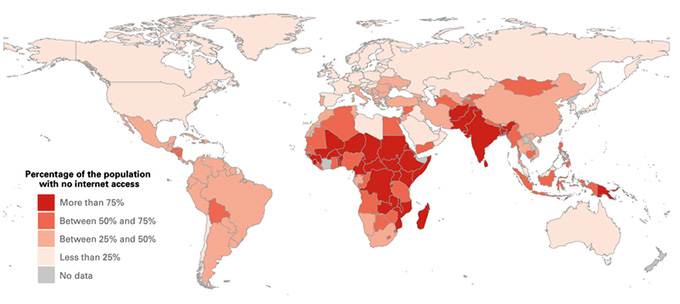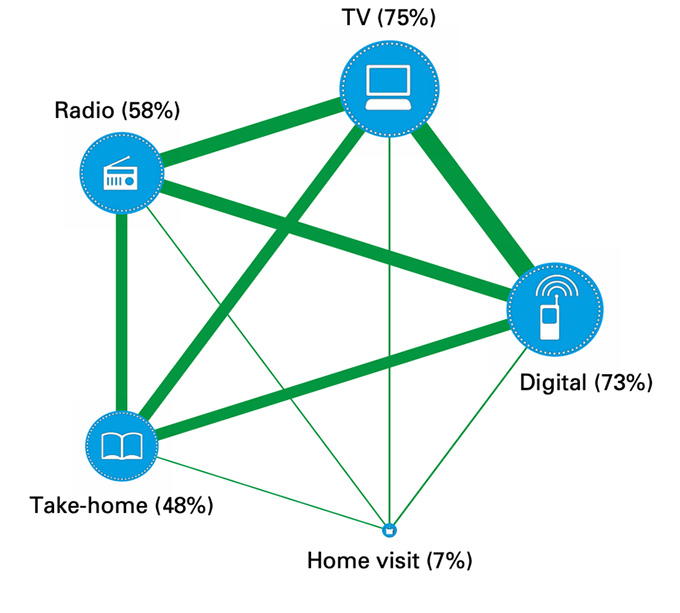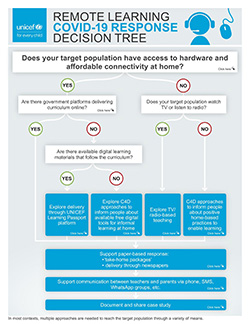
91% of all students in the world have been affected by the closure of schools in 194 countries due to the pandemic. This enormous global challenge has generated an abrupt and unplanned transition to distance learning.
It is clear that we were not prepared for such an abrupt transition, but it is no less so that distance learning has to be part of the solution, although determining in what form and percentage and how to articulate it remain open questions.
The global challenges we face after the first wave are short-term recovery and building resilient and equitable education systems for the future.
The answer to these challenges is not a “turnkey” solution. The “holy grail” of distance education is not the technology platform online shift, now offered on a silver platter by multinationals like Google or Microsoft.
Cuts in teaching autonomy
In recent years, concerns have been raised about whether the growing role of international private corporations could curtail the professional autonomy and rights of teaching personnel, as well as the local control of communities over their schools.
The customary lighthearted agreements between these companies and their consumers can change the conception of education as a public good. Education International warns that the context of the pandemic has served to offer us technological products to capitalize on them in the future with commercial and privatizing objectives of education.
On the return to school in the new normal, UNESCO, together with the ILO (International Labor Organization) have published a document aimed at policy makers in order to guide them in the support that the pandemic has shown that the community needs educational.
Other non-tech needs
The message is clear, investment is required in educational responses that include hiring more staff; the protection of the rights and working conditions of teachers; attention to the psychological and socio-emotional impact of the pandemic on students and teachers; adequate professional training and preparation for a reconfigured school with face-to-face and distance teaching …
Perhaps COVID-19 has definitely decided the debate on the advantages of hybrid education ( Blended Learning ), since the stubborn reality imposes its use; Perhaps the total aversion to technologies on the part of the group will decrease, because all help is necessary when confinement breaks the teaching model in the classroom to pieces; perhaps the most technologist group has to tone down their enthusiasm, since technology per se has not been able to solve the situation in a totally satisfactory way; Perhaps the legal regulation of distance work is a priority, since the labor rights of the teaching body must be protected and the harmful long-term effects of certain uses of online platforms must be prevented .

The digital divide: Percentage of population without internet access. Promising practices for equitable remote learning: Emerging lessons from COVID-19 education responses in 127 countries, UNICEF, Office of Research-Innocenti
826 million students without a computer
In Western Europe we naturally identify distance education with the combined use of electronic devices and high-speed internet connections. The international reality is different, 826 million students (half) do not have a computer at home and 706 million do not have internet access.
This reality has meant that the distance education response during confinement in 68% of the countries has been a combination of: digital media (73%), television (75%), radio (58%), paper resources distributed to the homes (48%) and visits (7%).

Percentage of countries according to the remote teaching model. Promising practices for equitable remote learning: Emerging lessons from COVID-19 education responses in 127 countries, UNICEF, Office of Research-Innocenti
Likewise, the essential feedback from parents and guardians has been carried out through SMS, chatbots and messaging applications.

Decision tree on remote teaching. UNICEF / Interagency Network for Education in Emergencies (INEE)
The variety of contexts is so wide – whether or not to have electricity, radio, TV, mobile phone, internet connection or computer – that UNICEF has developed a decision tree on remote teaching , a quick tool to determine the most appropriate channels for distribution. educational content.
Paper versus technology
It is interesting to note that, regardless of the availability of computers or online platforms , UNICEF recommends having redundant support for online communication through paper for the distribution of content and via SMS or telephone for feedback between educators and tutors.
This approach results on the one hand, have a “plan B” for cases that fail resources we already have internalized as basic in our daily lives as educational platforms online or Internet connection, and on the other hand, ensures a channel distribution of educational content for families with less purchasing power that do not have such resources.
Thus, both the use of what has come to be called frugal technology and redundancy in distribution and communication channels are necessary ingredients in a resilient and equitable educational system.
Inclusion is the key
The UN advocates for a widespread shift in the world of work towards more inclusive and people-centered digitization .
Education, specifically, is an eminently social activity in which the importance of peer support should not be overlooked. This maxim affects the group of students where the reinforcement of co-assessment, tutoring and mentoring among students has a lot of growth potential in hybrid or distance learning situations.
Likewise, a community of interconnected teachers constitutes a well-woven network that embraces each professional and facilitates discussion, resource sharing, collaboration, feedback, and peer evaluation. Institutions could encourage the strengthening of these communities, both national and international, thus promoting the shared use of resources generated in an open format.
In conclusion, distance learning is here to stay, either as a complement to enrich the classroom , or as a more intensive resource in confinement situations.
However, distance learning cannot surgically replace face-to-face learning, nor can an online platform replace all the interactions between people that take place in a classroom, nor the necessary work of the teacher.
The holy grail of distance education is in the teaching staff. It is a priority to invest in the human capital that is going to design and modulate the teaching-learning processes, which are based on interaction between people.
Author Bios: Javier Portillo Berasaluce is a PhD in Telecommunications Engineering and professor at the Bilbao School of Education, Arantzazu López de la Serna is a Professor at the Bilbao School of Education / Irakaslea Bilboko Hezkuntza Fakultatea and Naiara Bilbao Quintana is a Professor of the Department of Didactics and School Organization all at the University of the Basque Country / Euskal Herriko Unibertsitatea